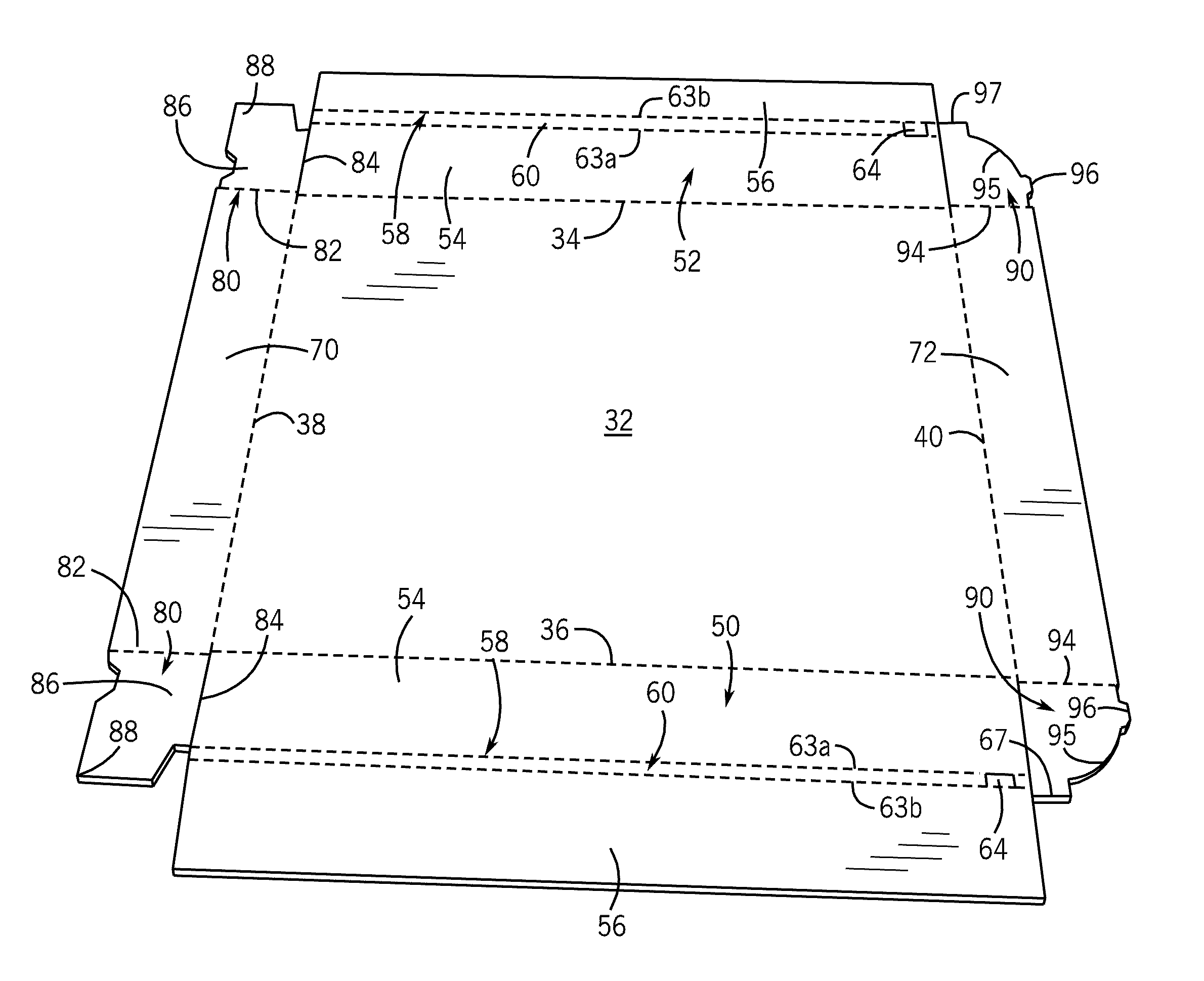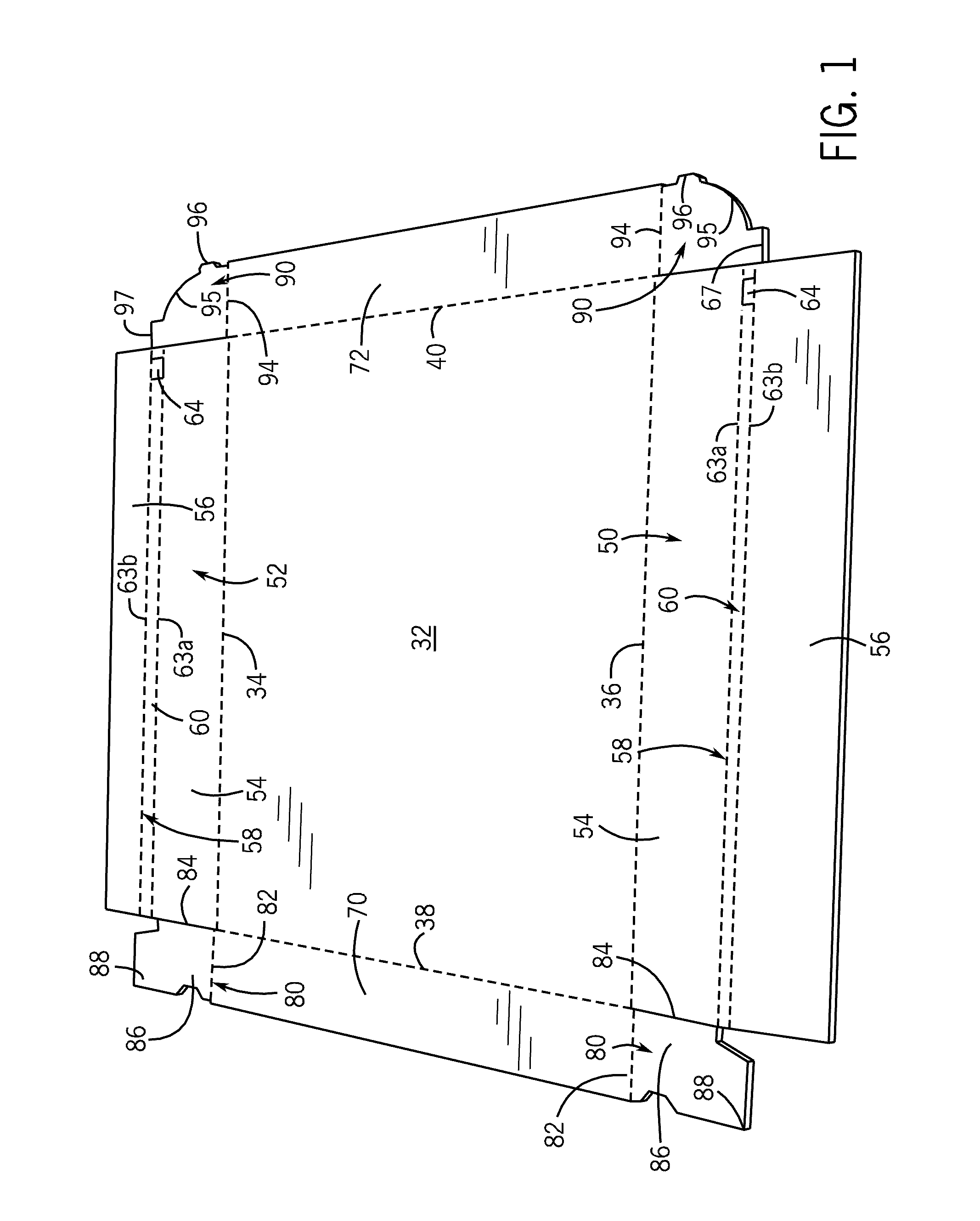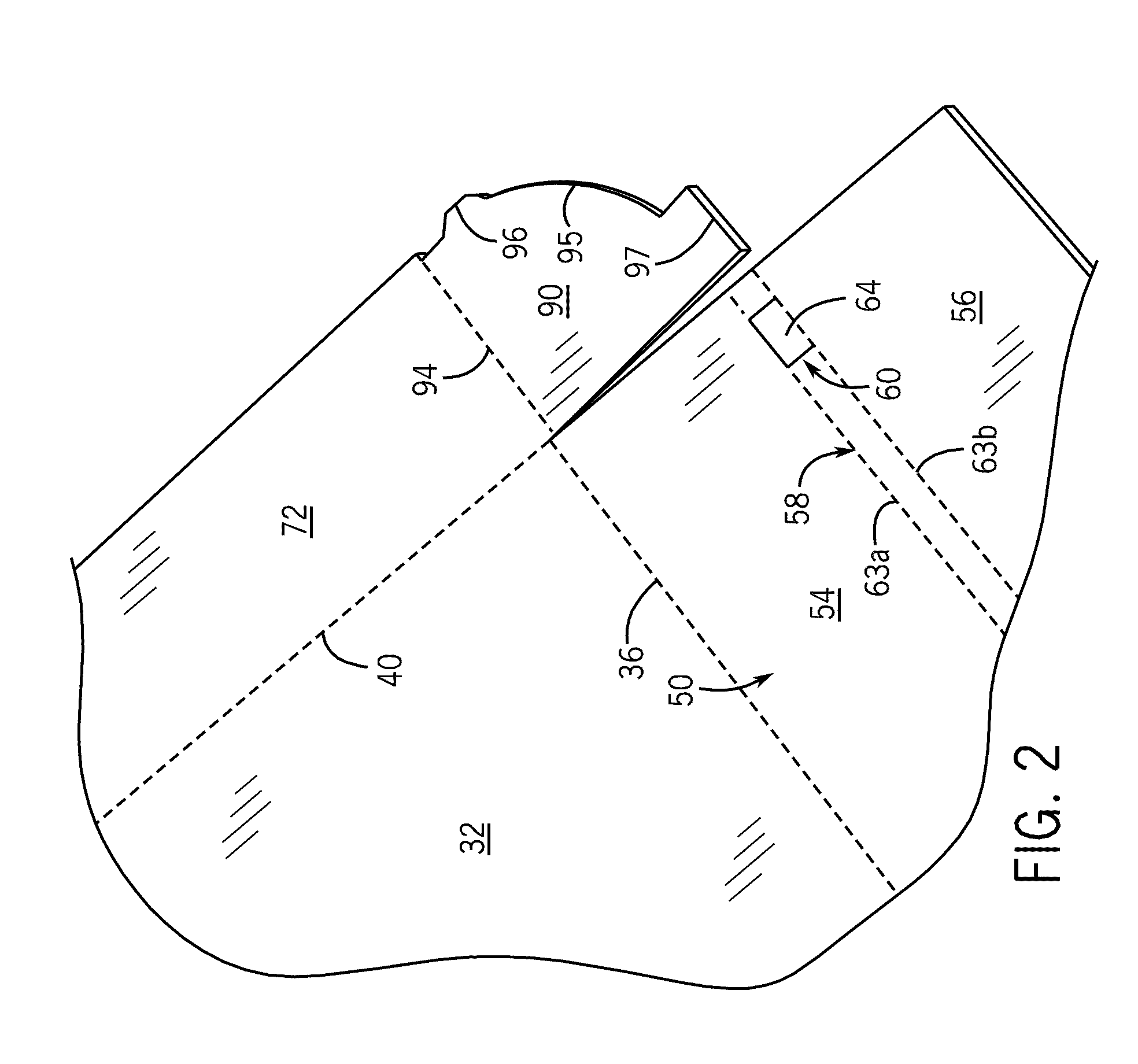Easy Open Bakeable Shipping Tray
a shipping tray and bakeable technology, applied in the field of paperboard cartons, can solve the problems of limited use of limited use of foldable trays, paperboard and corrugated paperboard cartons, etc., and achieve the effects of reducing sidewall bowing, reducing the thickness of the tray, and increasing the strength of the holder
- Summary
- Abstract
- Description
- Claims
- Application Information
AI Technical Summary
Benefits of technology
Problems solved by technology
Method used
Image
Examples
Embodiment Construction
[0021]Referring now in detail to the drawing figures, wherein like reference numerals represent like parts throughout the several views, FIG. 1 shows a one-piece blank 30. The blank 30 is die cut and scored, according to known techniques, from a flat sheet of a suitable material, which in the illustrated embodiment is a heat-resistant laminated paperboard or corrugated paperboard having a laminated linerboard. The blank 30 comprises a heat-resistant laminated paperboard or corrugated paperboard, such as a corrugated paperboard known by the name E-flute, however, the blank 30 can be fabricated from any of a variety of foldable paperboard, cardboard, or other materials. In order to provide a leakproof and heat-resistant container, the material comprising the blank 30 is preferably a laminated composite including a layer of plastic film bonded to the paperboard, cardboard, or other material of construction. In one embodiment, a corrugated paperboard stock is provided with a layer of pl...
PUM
 Login to view more
Login to view more Abstract
Description
Claims
Application Information
 Login to view more
Login to view more - R&D Engineer
- R&D Manager
- IP Professional
- Industry Leading Data Capabilities
- Powerful AI technology
- Patent DNA Extraction
Browse by: Latest US Patents, China's latest patents, Technical Efficacy Thesaurus, Application Domain, Technology Topic.
© 2024 PatSnap. All rights reserved.Legal|Privacy policy|Modern Slavery Act Transparency Statement|Sitemap



